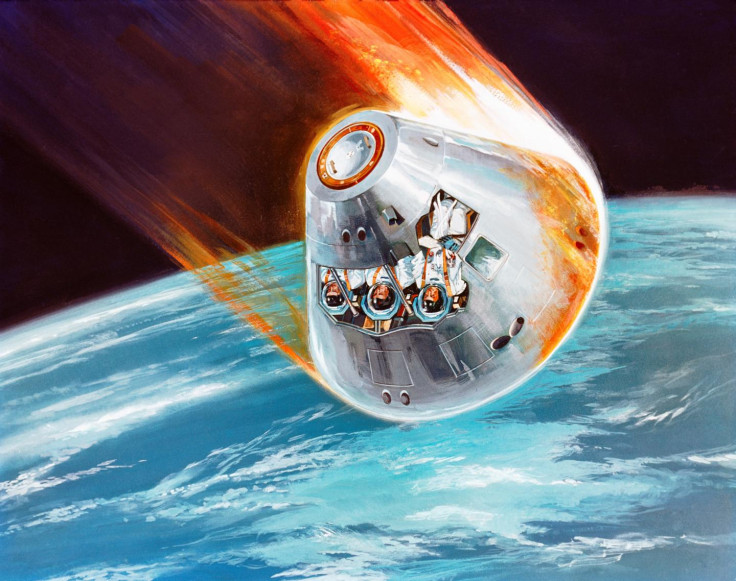Hypersonic flight communication blackouts potentially eliminated with redesigned antenna

A method of stopping communication blackouts with hypersonic flights has been proposed by scientists, who say a specially designed antenna could eliminate the anxious wait for re-establishment.
Communication blackouts are normal during superfast flights – such as re-entry into Earth's atmosphere – and at present there is no way to stop it.
Xiaotian Gao, a physicist at the Harbin Institute of Technology in China, explained: "When a re-entry vehicle is unable to be connected, the only thing you can do is pray for it."
This normal break was highlighted during the recent re-entry flight of astronauts Anton Shkaplerov, Samantha Cristoforetti and Terry Virts – the ESA noted that as the trio "hurtle towards our planet, communications will be lost at times" but not to panic.
Communication blackouts take place when the spacecraft is moving at more than five times the speed of sound. The craft is surrounded by a plasma sheath – a blanket of hot ionized air that reflects electromagnetic signals under most conditions. This means connections with anything outside the vehicle will be cut off.
As @AstroSamantha @AntonAstrey & @AntonAstrey hurtle towards our planet communications will be lost at times - #DontPanic
— ESA Operations (@esaoperations) June 11, 2015
Intermittent contact with the three astronauts as they enter our atmosphere and plasma builds up around the spacecraft. Landing in 20 minute
— ESA Operations (@esaoperations) June 11, 2015
Touchdown! pic.twitter.com/EbQ0uqJmpR
— ESA Operations (@esaoperations) June 11, 2015
The researchers, publishing their findings in the Journal of Applied Physics, have now suggested a new way to maintain communication by using this plasma sheath to enhance the radiation from a communication antenna.
Gao and Binhao Jiang analysed previous experiments to show how this signal enhancement could be explained by matched electromagnetic oscillations between the sheath and the surrounding air.
They suggest that by adding a matched layer to ordinary communication antennas, the conditions needed to maintain communication could be created. This matched layer acts like a capacitor in the antenna circuit, while the plasma sheath acts as an inductor, resisting changes in an electrical current passing through it. When put together, the capacitor and inductor can form a resonant circuit.
Gao explained: "Once the resonance is reached, the energy can be exchanged between them steadily and losslessly, like real capacitance and inductance do in a circuit. As a result, the electromagnetic radiation can propagate through the matched layer and the plasma sheath like they do not exist."
The key, however, would be to make the thickness of the matched layer and plasma sheath smaller than the wavelength of the electromagnetic waves used for communication. Scientists will need to make it so the matched layer can adjust for the changes in the plasma sheath during the flight.
"We don't need to know exactly the properties of the plasma layer, but we need to know the ranges for these properties. The matched layer will be adjusted by an automatic control system, so we only need to know the ranges to make sure this whole system can work appropriately," Gao said.
If successful, they say the technology could be used to maintain communication with other hypersonic vehicles, like ballistic missiles and futuristic military planes.
© Copyright IBTimes 2025. All rights reserved.






















